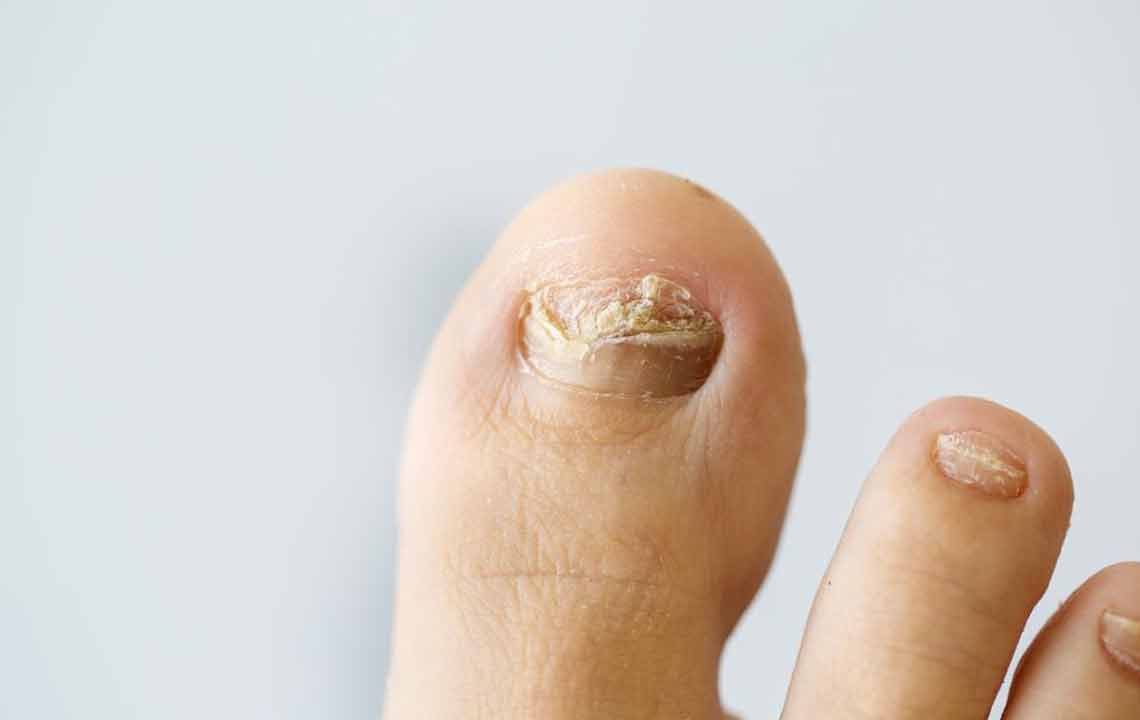Some tips on how to cure nail fungus
Nail fungus begins as a white or yellow spot under the tip of your fingernail or toenail. As the infection spreads it goes deeper nail fungus is painful and change the color of your nail and cause it to thicken. If it is not treated in due time, it could spread to other nails. Toenail fungus spreads through the cracks in your nails or cuts in your skin. The toes tend to be warm and damp creating ideal space for the fungus to grow. There are different types of fungi affecting different parts of the nail. The infected nail may get separated from the nail bed and you may experience pain and foul odor.

What are the causes?
Along with bacteria, the fungus is also present in your nail. Fungal infections normally take some time to grow and it is the warm, moist environment that causes them to grow. Medically this is known as Onychomycosis. The nail fungal infection is caused by dermatophyte fungi.
Factors that can lead to development of the fungus
Factors can be many; some of the common ones are listed below:
- As the age increases due to the slow growth of nails and reduced blood flow to the nails it could lead to the development of fungus.
- If a person perspires heavily and adequate care to keep the palm and feet dry are not taken then it could lead to nail fungus.
It is observed that toenails are more affected by fungus than the fingernail. The reason behind this is as follows:
- Toenails are mostly in dark and warm condition due to the shoes, creating an ideal atmosphere for the fungus to breed.
- Toes also have less blood flow as compared to the fingers, so they cannot defend themselves from the attack of fungus.
What are the symptoms?
Following are the symptoms of nail fungus:
- Thickened nails
- Brittle, crumbly or ragged nails
- Distorted shape of nails
- Dull nails
- Dark color spot below the nails due to formation of debris
Test and diagnosis
The doctor examines the nail and may scrape the nail and debris and send it to the lab for examination to detect the cause of fungal infection and the type of fungus affecting it.
How to cure nail fungus
If you are wondering how to cure nail fungus, you should consider the following herbal or natural ways to treat nail fungus:
- Maintain cleanliness – If there are white markings on your nails, file it, soak the nail in water, thereafter dry them properly and apply any medicated cream. Or lotion.
- Use Vicks VapoRub – This is not only helpful in case of a cough and cold but also proves to be of great help in case of nail fungus. It is a documented fact that application of Vicks VapoRub over the affected nail can help to cure nail fungus.
- Trim the nails – Cut and properly shape the nails so that pressure on the nails is reduced thus help to reduce the pain. If this step is carried before applying the anti-fungal lotion then this helps the cream to reach deeper layers. Using a nail filer to trim the nails also helps to thin the thick nails. Following this regime, every night will help to heal the nail fungus.
- Apply urea cream – Application of urea cream to the affected area and then covering it with a bandage also helps to combat this situation. Apply the cream in the night and wash it off in the morning and thereby win the fight against nail fungus.
How to cure nail fungus with surgical and other procedures
- Surgery – If the case worsens then the doctor may suggest removing the nail by means of surgical procedure. A new nail will come in the place of the old nail, but it will take some time. However good care of the new nail should be taken to avoid the further occurrence of this fungal infection.
- Laser and light-based therapies – Carbon dioxide laser therapy combined with anti fungal nail cream can help in the treatment. This may help in the treatment of the condition of nails. However, you must keep in mind that laser and light-based treatments are not easily available and tend to be very expensive. These treatments are not covered by insurance also.
You must consult a doctor to know how to cure nail fungus. Also, in case you have diabetes, you need to tell your doctor about it prior to undergoing any treatment for nail fungus. A severe case of fungus can lead to a severe pain in the nails and also cause permanent damage to your nails.

